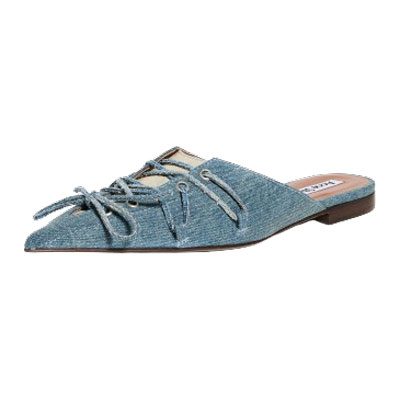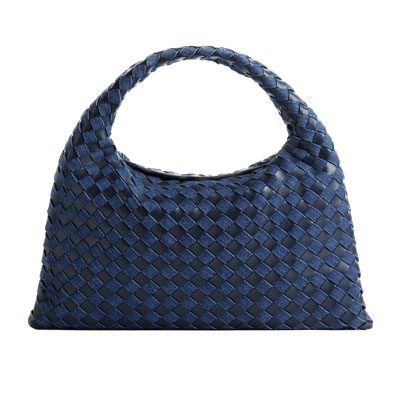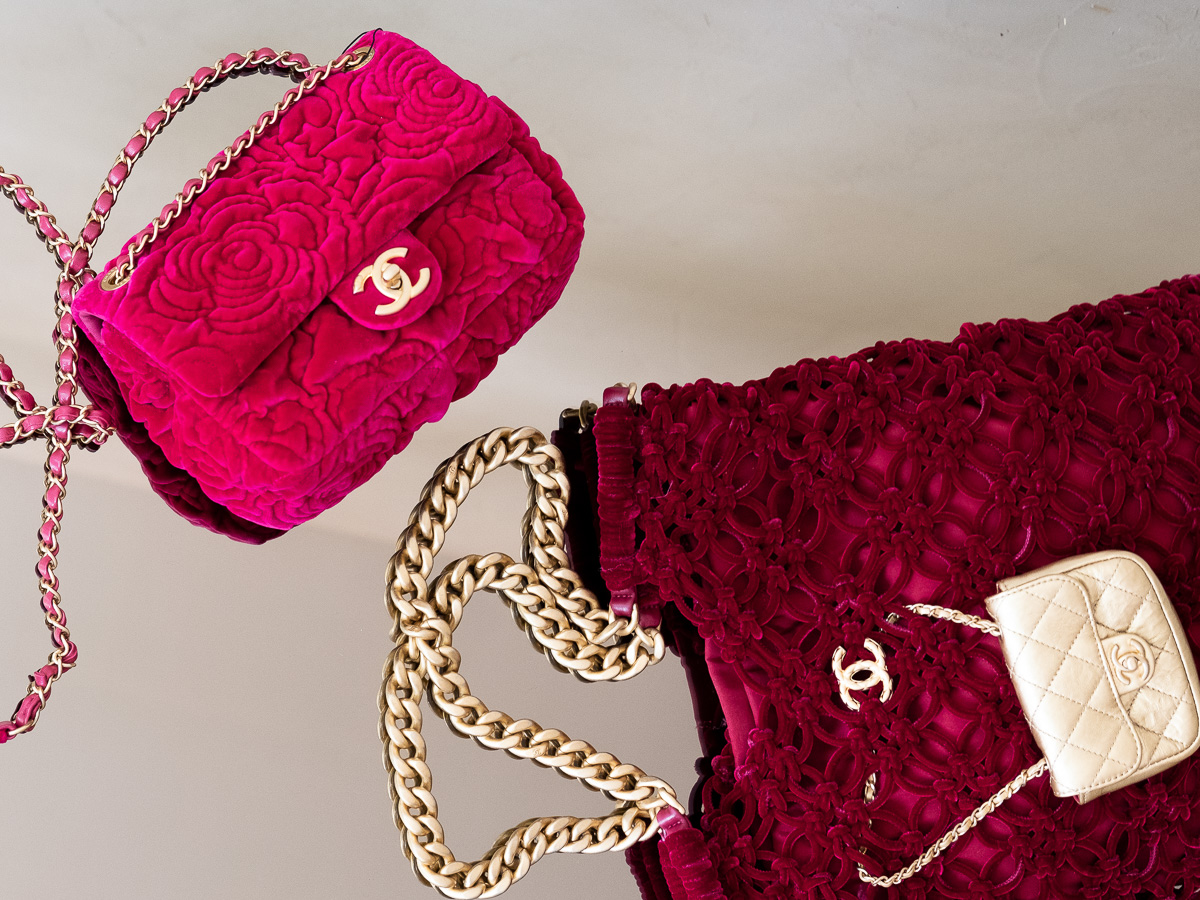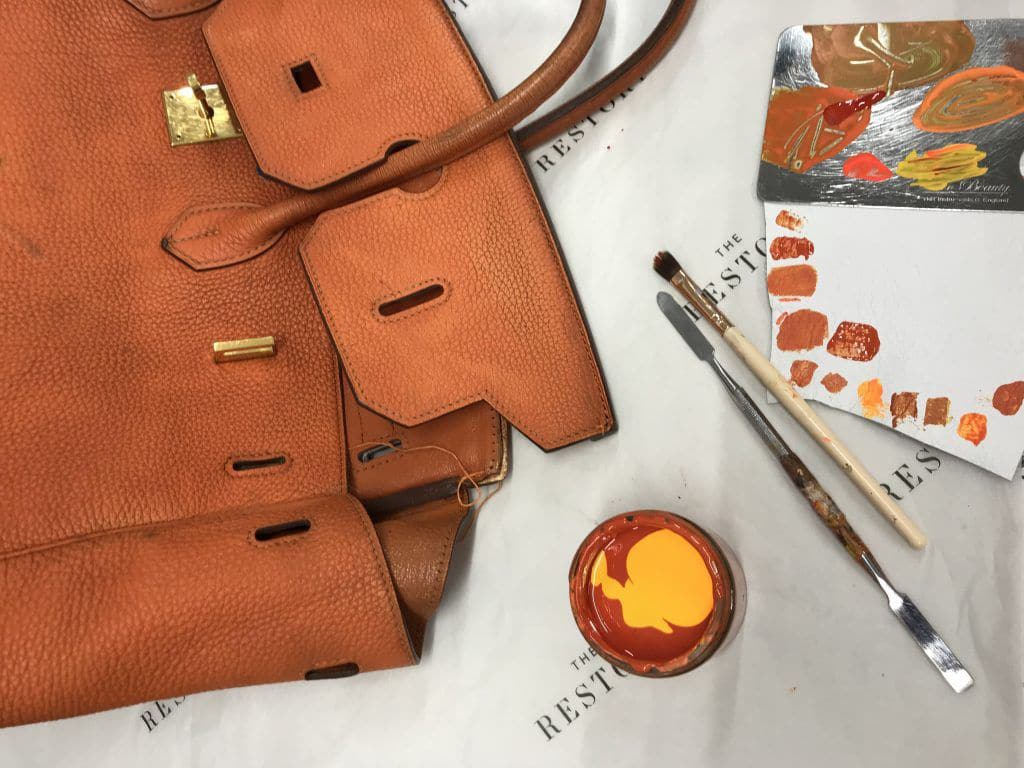With things beginning to reopen here in the U.S. we are all finding ways to make sure that safety remains a priority; not only for ourselves, but for our loved ones, and neighbors too. We’ve received a lot of feedback over cleaning bags and it left us wondering: can you truly sanitize a handbag? We went on a mission to find out the best ways to disinfect our purses so that we can truly enjoy our bags again and carry them worry-free.
To start, I decided to see what brands and leather care experts had to say, and here are their responses:
Hermès
We called Hermès to see if they knew of any “safe” ways to sanitize their bags and unfortunately they didn’t have any recommendations aside from using your handbag raincoat and washing your hands frequently. If your bag did not come with a rain coat you can purchase one here.
Louis Vuitton
I spoke to a customer service agent on the phone at Louis Vuitton and they recommended gently wiping down the canvas with a clean white towel, soap and water.
Collonil
Collonil recommends using their waterstop spray, followed by a conditioning treatment from their leather gel to kill off any viruses and create a protective barrier for your bag. Though this can’t be done on a daily basis, it can be done once a month. Be sure to follow up with the conditioner to keep your bag from getting too dry. This is part of my personal purse care routine and something I do to keep my bags in tip top shape.
The Handbag Spa
The Handbag Spa actually makes an anti-bacterial cleanse which claims to kill 99% of bacteria on all types of leather and fabric, including interiors. This is something I have never tried myself, so I urge you to use with caution as you never know how a product will react with a bag. Spot testing is a good idea any time you’re using a new product.
Leather Spa
The Leather Spa says that anything with alcohol in the wipe is harmful to the leather (more on that later), so they would recommend the leather shampoo. However, be careful not to overuse this because it will dry out the bag. They also stated that it’s more a safety precaution than a disinfectant. With that being said this is not a product I have personally tried myself and I would be very cautious with what bags I would use it on. Try to avoid delicate leathers like lambskin and suede at first and remember to always spot test.
Alcohol can cause serious irreparable damage as it penetrates the leather
To summarize, unfortunately the issue with using commercial or even hospital grade cleaners, is that they have an alkaline pH level. This means that every time the leather on a bag comes into contact with them, the acidic and alkaline properties try to neutralize each other, causing damage via chemical reaction at a cellular level. Essentially, it’s basically destroying your bag. With that being said, baby wipes, Clorox wipes, and anything with alcohol in it can truly ruin a bag far beyond staining or stripping the surface—it can cause serious irreparable damage as it penetrates the leather.
Soaps are also going to be a no go, as leather does not have the ability to repair itself like living human skin. If you feel like you still MUST do something, try looking into products that support your leather’s natural pH, often tagged “pH balanced” or “pH matched”. On that note, never forget to test a product on a discreet part of the bag before applying to your bag in full. Make sure the spot test doesn’t cause any adverse reactions to your bag. It’s also always a good idea to moisturize after, so the bag doesn’t become brittle, as too much treatment can lead to dry rot.
With that being said here are two options that I do not personally recommend, but will leave in case you’re desperate:
A White Vinegar Treatment
White Vinegar is an option if you feel like something must be done. The good news is that it kills roughly 99% of bacteria and 90% of germs, but I do not recommend as it’s very acidic in nature. It has a pH of around 2/2.5 and can potentially cause long term damage to your bag. If for some reason you feel as though you have no other choice, start off testing it somewhere discreet first. Pour some in a small bowl then use a cloth to wipe down the surface of your bag gently. Allow it to dry in the sun—the vinegar smell will fade with time. You can use a toothbrush to touch up the tight spots like in between the hardware. I have only done this once as a last ditch effort to save a bag from mold.
The Freezer Trick
Freezing your bag is also an option but do so with caution. Since leather is a skin it’s able to adjust to the body’s temperature, as well as external temperature changes, unlike faux leather that is essentially plastic. Since air is able to circulate through leather it allows it more versatility in extremes and the freezing temperatures will kill off some of the germs. Just be sure to have the bag sealed in something very tightly to prevent ice crystals from forming. Check in periodically as you do not want your bag to stiffen. Again, not something I necessarily recommend, just an option if you find yourself with no other choice.
So with everything mentioned above, what do I actually recommend? Well, the best way to avoid bacteria is simply washing your hands, and doing so frequently. It will help reduce the amount of bacteria you deposit on your bag and in turn the amount your bag gives back to you later on. This goes beyond just the handle, but can apply to the interior of your bag as well. Don’t forget to use hand sanitizer after an outing or touching high traffic objects if you can’t wash your hands and let it dry fully before handling your bag again.
If you want more tips on how to keep your bags as sanitary as possible check out the best handbag practices to keep your bags clean. Have you tried any of the methods listed?













